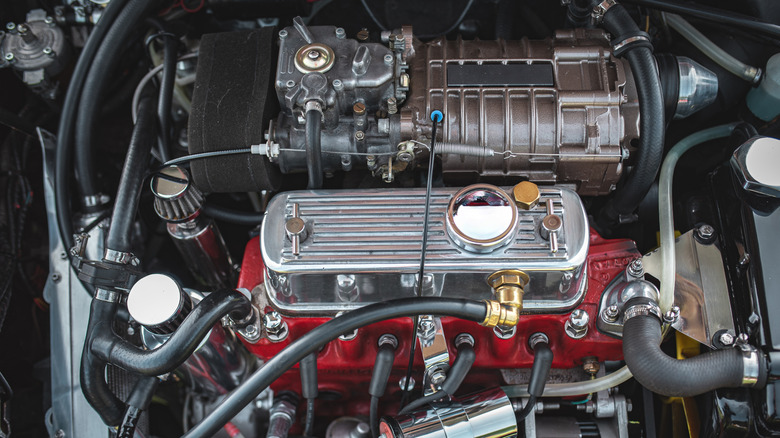Can You Put A Supercharger And A Turbo In The Same Car?
If you want to get more horsepower out of your car, there are usually a few avenues to explore. You can consider trading in your current model for a high-performance vehicle, assuming you can handle the cost involved. You can maybe decide to install a cold air intake, and even better, add a cat-back exhaust system. Not only will this translate to increased horsepower, but you'll also notice a huge difference in fuel efficiency. Another way you can easily boost your car's engine performance is to add some boost.
Installing a turbocharger is a great way to achieve this, as it compresses air into the engine, translating into more power. Despite generating a lot of torque, turbochargers come with one major downside: Turbo lag, referring to the throttle delay that drivers experience when accelerating a turbocharged car. Suppose you want to enjoy more horsepower while avoiding the turbo lag effect. In that case, you can consider using a supercharger, if your vehicle allows for it. It works somewhat like a turbocharger, but instead of using exhaust gases to spin the turbine, it typically uses a belt-driven system to link it to the engine's crankshaft.
This results in an immediate boost in power (particularly at lower rpm) and quicker acceleration, at the cost of more fuel consumption. Of course, installing either a supercharger or a turbocharger is a power upgrade on its own. But can you combine both to enjoy the best of both worlds? Yes, in a setup popularly known as twin charging, and it's a more common engine configuration than you might think.
Get more power by equipping your car with both a supercharger and a turbocharger
Cars with twin chargers were once rare powerplants, but they've also been used in production cars across the automotive industry. Of course, this might sound like a gearhead's dream, but it's something that has been in use by automakers like Volkswagen and Volvo for years. This setup combines both a turbocharger and supercharger in one engine, offering power gains that neither could offer on their own.
Both the turbocharger and supercharger have their strengths and weaknesses: The turbocharger is highly efficient, but comes with turbo lag. On the other hand, the supercharger offers instant boost, but at the cost of high fuel consumption. When you combine these power boosters, they help cover each other's weaknesses, creating a balanced and dynamic performance profile — albeit with the caveat that fuel economy still suffers under this configuration. The supercharger will deliver quicker throttle response at low rpm ranges by eliminating turbo lag, and the turbocharger will offer massive power gains as your speed increases.
As awesome as twin charging sounds, however, it brings plenty of extra costs, complexity, and mechanical stress. Overheating can be a concern if the setup for your engine is not optimal for cooling. You'll also have to budget for the added fuel costs. Before you envision enhancing your car's performance with these systems, it's crucial you understand how superchargers and turbochargers work individually. You need to weigh the performance benefits and long-term investment and upkeep required to keep your car running smoothly and efficiently if twin-charging is an option for you.

